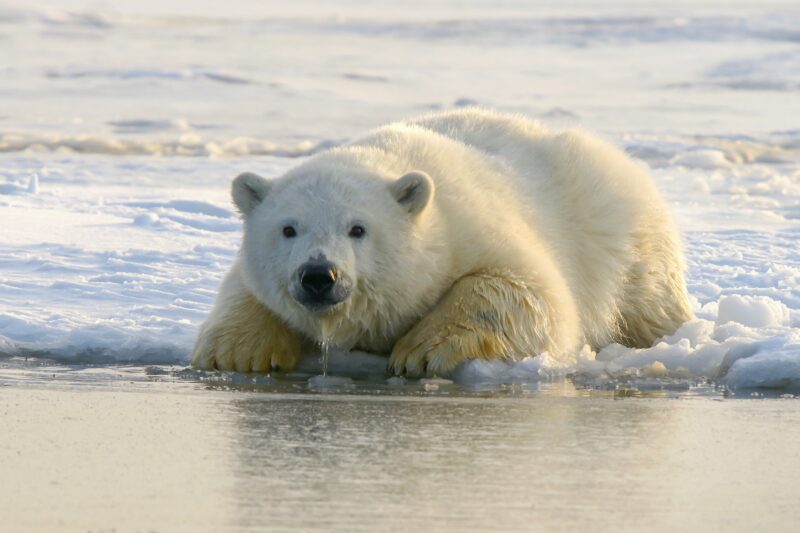Polar bears have unique ice-repelling fur
If you worry about polar bears staying warm in the frozen Arctic, don’t. These animals not only survive cold temperatures, but they need them to thrive. Polar bears have the necessary adaptations to live comfortably in frigid environments. How do they do this? The University of Dublin said on January 29, 2025, that an international team of scientists found polar bears’ greasy hair prevents ice from sticking to their fur.
This is the first study that has been carried out on the composition of polar bears’ hair. The team of scientists published its results in the peer-reviewed journal Science Advances on January 29, 2025.
The secret to ice-free hair is greasy hair!
The team of scientists collected the hair of six polar bears in the wild. Scientists focused on studying the bears’ hair grease, technically known as sebum. They found ice has a harder time sticking to hair when it’s greasy than when it’s clean.
Julian Carolan is the first author of the study. Carolan is a Ph.D. student at Trinity College Dublin’s School of Chemistry and the AMBER Research Ireland Centre for Advanced Materials and BioEngineering. Carolan said:
The sebum quickly jumped out as being the key component giving this anti-icing effect as we discovered the adhesion strength was greatly impacted when the hair was washed. Unwashed, greasy hair made it much harder for ice to stick. In contrast when the polar bear hair was washed and the grease largely removed it performed similarly to human hair, to which ice sticks easily whether it is washed or greasy.
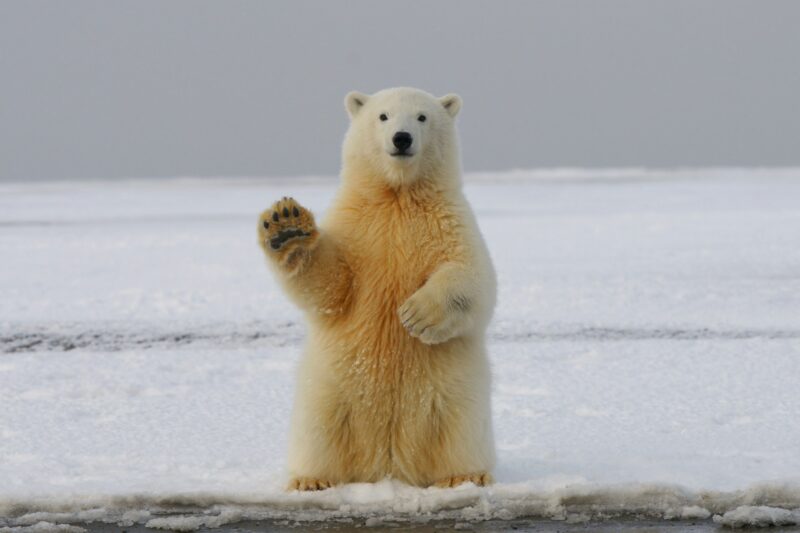
Polar bears have unique fur
Scientists wondered why ice doesn’t stick to greasy hair on polar bears, but it does stick to humans’ greasy hair. The answer lies in the composition of sebum. The team performed a detailed chemical analysis of polar bear sebum. They found sebum’s key components are cholesterol, diacylglycerols and fatty acids. What they didn’t find was something called squalene.
Squalene is a fatty molecule present in human hair and other aquatic animals, such as sea otters. The absence of this element in the polar bear’s fur is important from an anti-ice perspective. Richard Hobbs of Trinity’s School of Chemistry and AMBER is one of the study’s senior authors. Hobbs said:
Despite having thick layers of insulating blubber and fur, and spending extensive periods in water at sub-zero temperatures, it seems that the fur grease provides a natural route for polar bears to easily shed ice when it forms due to the low ice adhesion on their fur.
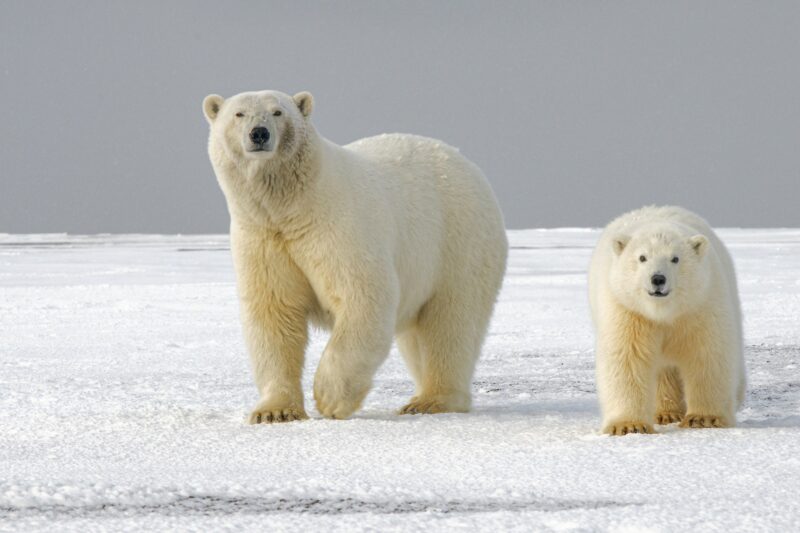
Various strategies for staying warm
Animals that live near the poles have varying methods to stay warm. Hobbs added:
Anne Kietzig’s group at McGill recently found that the hierarchical structure of Gentoo penguin feathers afforded them anti-icing properties that relied on the feather structure rather than the preen oil coating. Our work shows that polar bear fur provides an alternative strategy to produce an anti-icing surface based on the characteristic blend of lipids present in their fur sebum or hair grease.
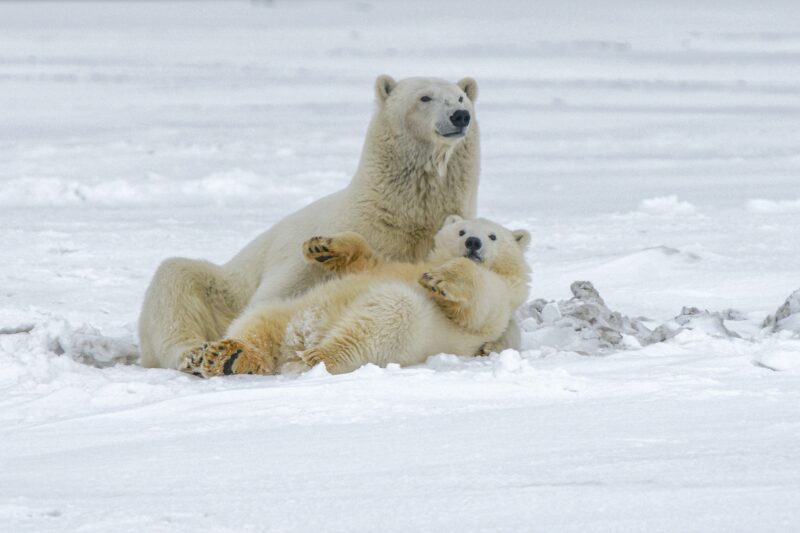
How does this finding affect us?
Discovering more about the animals that inhabit the planet with us is fascinating. But we can also apply what we discover about their capabilities to our daily lives.
For example, the scientists said we could create an artificial sebum similar to what polar bears have. We could use this as an anti-icing surface coating or in cutting-edge ski skins for skiers and snowboarders, among other things. Hobbs said:
Animals living in polar habitats have emerged as a source of inspiration for the development of new anti-icing materials.
Applying the knowledge gained from the polar bears could also help us eliminate harmful technologies. For example, PFAS are chemicals used in a wide variety of industries around the world. These chemicals degrade extremely slowly and can accumulate over time in humans, animals, water, food and the environment. Hobbs said:
We expect that these natural lipid coatings produced by the bear will help us to develop new more sustainable anti-icing coatings that may replace problematic ‘forever chemicals’ like PFAS that have been used as anti-icing coatings.
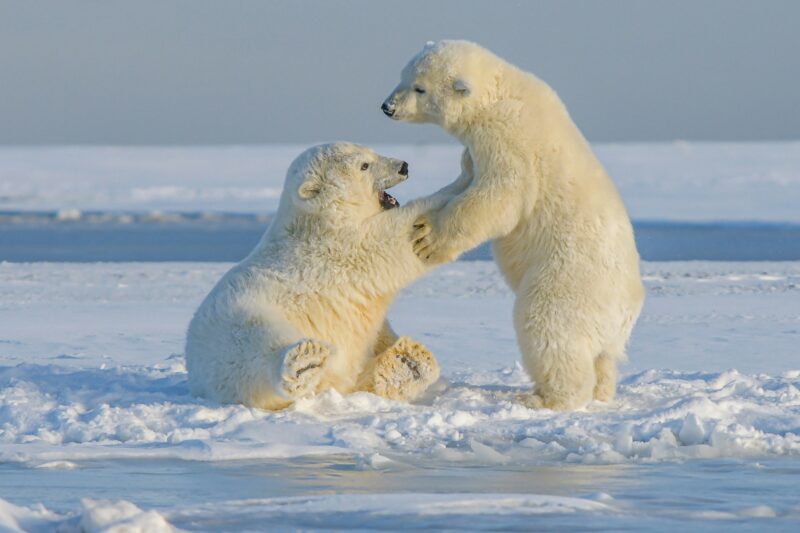
Bottom line: How do polar bears stay warm in the frigid Arctic? Scientists have found their greasy hair keeps ice from forming on their coats. This knowledge could be used to create more nature-friendly products without dangerous “forever chemicals.”
Source: Anti-icing properties of polar bear fur
Read more: Polar bears’ biggest threat is ice loss
Read more: Otters are cute! They’re our lifeform of the week
Read our previous article: SETI Researchers Double-Checked 1 Million Objects for Signs of Alien Signals
